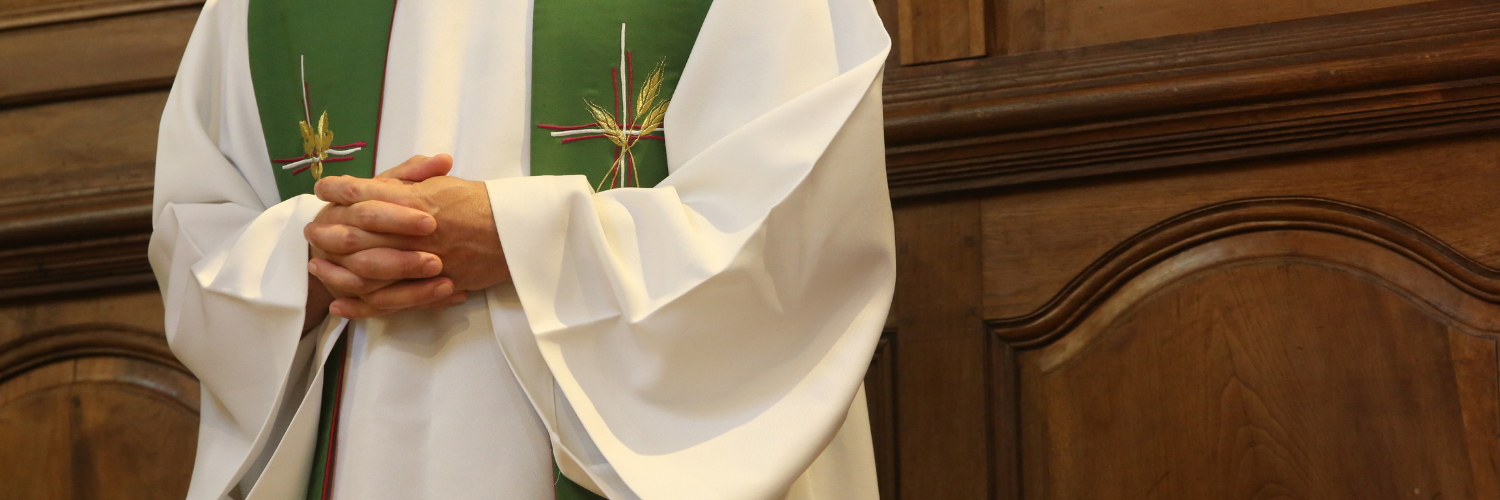
Heading in for my first day as Acting Principal I was deciding whether to arrive in full ecclesiastical gear, or casual shirt and pants, or secular CEO suit and tie. For any of us, at one level or another, the preacher in a three-piece designer suit or jeans and a T-shirt, or traditional ecclesiastical vestments in continuity with the dress of early Christians in the Hellenic or Roman world affects our engagement with worship.
There have been many alterations to the ecclesiastical vesture and often misunderstandings. What the priest, minister, or pastor, along with the lay assistants wear for worship should not distract from the gathering around the Word and the Table. It should unite the assembly in their common calling as the community of the baptised. My father would often comment on the pastor’s wrinkled alb or unpolished shoes; unfortunately rather unspiritual thoughts, for which my mother chastised him. Yet, a reminder of how easily the assembly is distracted. I’m reminded of the argument for Sanctus Bells that I read from an Anglican priest: “to gather the wandering thoughts of the faithful and bring them into focus for the Eucharistic Prayer.” Alas, the machinations of the centuries have not been helpful in considering vesture that draws us into full communion with the saints who first gathered and opened the Word and broke the bread. Sharing with our earliest confreres and consoeurs their adaptation of Hellenic and Roman dress can simplify fashion decisions, connect us to a long chain of witnesses, and go beyond trends and the economics of clothes. It also serves as common ground, common heritage.
Liturgical reform movements of the past century emphasised the white garment (alba), as a simple, basic vestment for both lay and clergy. In doing so, it recognised the dress with which the newly baptised were clothed as they emerged from the waterbath. The baptismal garment freely worn by all the baptised and emphasising our calling, our “ordination,” in baptism to be bearers of Grace and witnesses to God’s embrace. Many traditions have recognised this fundamental and made it the ecumenical vestment. When clergy and lay from a variety of denominations recognise that they are clothed with Christ and one in baptism, wow! what an ecumenical affirmation of being Children of God.
I realise that reformation traditions, such as my own (Lutheran), also played a part in confusing the issue by adopting academic dress for church services. Lutherans went through a few vesture changes before adopting the alb as a common vestment (there was the academic gown with “preaching tabs,” then the cassock and surplus, and finally the alb). It seems albs are increasingly common amongst Anglicans (as opposed to “choir dress”) and United Church, if not also Presbyterians, Mennonites, but still less so amongst Evangelicals (more CEO suits or the casual look to be seen there). What I like about using this baptismal garment –which may get “dressed up” with a stole for an ordained person (the yoke of office) or a chasuble (ancient Roman poncho worn on festive occasions) for a Eucharist– is it’s ability to avoid a display of fashion and any fashion choice comments, as well as the question, “what are you wearing to lead the service?” Viewing it as the baptismal garment (albeit the “baptismal dress” is these days less common) unites both the laity and those from amongst the laity ordained to a ministry of Word and Sacrament. We are united as Children of God with a few of us leading that moment’s praise and thanksgiving, on behalf of all the assembly.
We speak about a changing church and changing times, yet I find we often cling with great nostalgia or distinction to elements that arose for a purpose in a different time (for Reformation traditions, most often to demonstrate that “we are not Roman Catholic”). I’m inclined to look to our earliest brothers and sisters in Christ, avoid the confusion of later times, changing fashion trends, and share their dress as we strive to share their calling to be disciples of our Lord Jesus Christ.
Eric Dyck, Acting Principal
This message was written by Eric Dyck for this week’s Wingèd Ox, a weekly news digest distributed to the college community.

